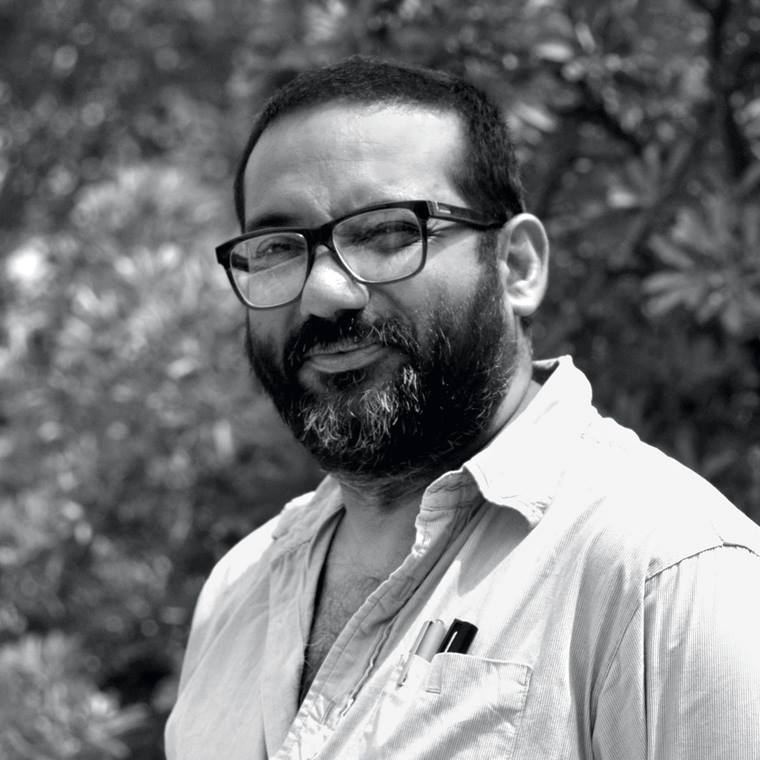Born on 22 September 1909, Manishi Dey was one of the most prominent painters of the Bengal School of Art. He was the younger brother of Mukul Dey, a pioneering Indian artist and drypoint etcher. He was born in Dhaka, Bengal Presidency. He was the fifth child of Purnashashi Devi and Kula Chandra Dey. At age of eight, his father died and he was sent to the Santiniketan School Patha Bhavana founded by Rabindranath Tagore.
Initially, he disliked the preparatory convention of Santiniketan and became mutinous. Soon after he came to the contact of Abanindranath Tagore’s Bengal School of Art. He became one of the most versatile students of Abanindranath while other close students include Nandlal Bose, Asit Kumar Haldar, Mukul Dey, K. Venkatappa, Sarada Ukil, and Jamini Roy. These artists spread the spirit and form of the Bengal School Of Art throughout India.
Abanindranath Tagore was famous for promoting traditional Indian culture in his teachings. These traditional teachings provided the foundations for the artistic works of Manishi Dey. The political and religious developments in the subcontinent were the major influence on the life of Manishi Dey. These political changes during the colonization and decolonization of India were a major influence on his education.
Monochrome Period 1928-1947
Manishi Dey was an amid traveler and his paintings were majorly influenced by his travel and search for inspiration. He traveled a lot in the Indian subcontinent in search of varied and newer visual idioms. His voyages helped him to create works with the watercolor ‘wash technique’. He used the wash technique repeatedly in his works.
In 1928, his brother Mukul decided to settle in Santiniketan and to become the first Indian principal of the Government School of Arts in Calcutta. He held this position until 1943. It was 1928 and he started his exhibitions at the age of 19. His first solo show was in Calcutta where his brother Mukul established himself. This lead to many other exhibitions such as in Nagpur in 1928, Madras (1929), Bangalore (1930), Ceylon (1930), Bombay (1932), Shrinagar (1932), Arah (1934), Benares (1934), Nainital (1936), Gwalior (1944), Delhi (1947). All India Fine Arts and Crafts Society (AIFACS) exhibited his works in 1946 with other prominent artists such as Amrita Sher-Gil and Sailoz Mookherjea.
Formation and Member of Progressive Artists’ Group
Manishi Dey had close connections with M.F. Husain, F.N.Souza, and S.H. Raza as well as Sailoz Mukherjea and Shantanu Ukil in New Delhi during the late 1940s and early 1950s. This leads him to become the member of the Bombay Progressive Artists’ Group which was founded in 1947. Although the group got dismantled in 1956, it emerges as one of the most influential forces in the Modern Indian Paintings. Dey thus became one of the highest contributors and transformers of modern Indian art.
Red and Orange Period 1948-1966
After the end of the Second World War and the establishment of Indian independence, Manishi Dey’s works changed radically and got a new freshness as well as vitality that lacked in his early years. One of the main reasons was the influence of the Progressive artists’ group on his paintings. He was in contact with new artists and the cubist movement.
In 1949, he painted a series of 22 moving images of non-Muslim refugees from Pakistan that captured the agony and pain of their flight. During the following years, he continued exhibitions in Bombay (1950), Allahabad (1953), Bangalore (1957), Ootacamund (1959), Madras (1960), and Trivandrum (1961).
Through his wide prominence, he became one of the leading artists promoting Indian Cultural Heritage. In an article in 1953, he encouraged young artists to follow their cultural heritage. His paintings were well received and highly praised by fellow artists as well as critics before his untimely death.
The Bangalore writer and scholar Venkataramiah Sitaramiah praised his works highly and termed the phase his “red and orange” period. “Daughter of the soil” and “Bengal women” are the two prominent paintings of this period.
Richard Bartholomew, a writer, art critic, poet, painter, photographer, who was also a one-time secretary of the Lalit Kala Academy was one of the foremost proponents of the Progressive Art Movement. Richard published critical writings for more than three decades about Indian art, he was deeply integrated into the Indian art movement after independence.
The books “A Critic’s Eye” and “The Art Critic” publish a selection of his writings and photographs from the 1950s up to the 80s, giving an insider’s account of the untold story of Modern Indian Art.
Legacy
At age of 56, he died in Kolkata. He was at the height of his career. His works have been exhibited in many Indian Museums and galleries for many years. Some of the galleries which were exhibiting his works are National Gallery of Modern Art, Lalit Kala Akademi in Lucknow, Uttar Pradesh, Delhi Art Gallery, the Allahabad Museum, the Salarjung Museum, Hyderabad, Kala Bhavan in Santiniketan, and the Samdani Art Foundation in Dhaka, one of the largest collections of Bangladeshi and Indian art worldwide.
His works are receiving renewed international interest since the end of the 20th century. They are getting exhibited in London and New York. Since the early 21st Century, Manishi Dey’s works are also included at major international auction houses, such as Bonhams and Christie’s, as well as at numerous high-profile Indian auction houses.
In 2015, an auction of Christie’s in New York promoted the Progressive Artists Group as the “most influential group of Indian art ever created”. The result was sales totaling more than US$8M, above the high estimate. This showed the strong interest in Modern Indian Art. With a hammer price of more than US$4M, the painting “Birth” by F.N. Souza realized the highest price ever for a work by an Indian artist.

Vikash Kalra is a self-taught artist & writer based in New Delhi whose work has been exhibited across India and is held in several private and corporate collections.
https://www.vikashkalra.com/web/

Leave a Reply